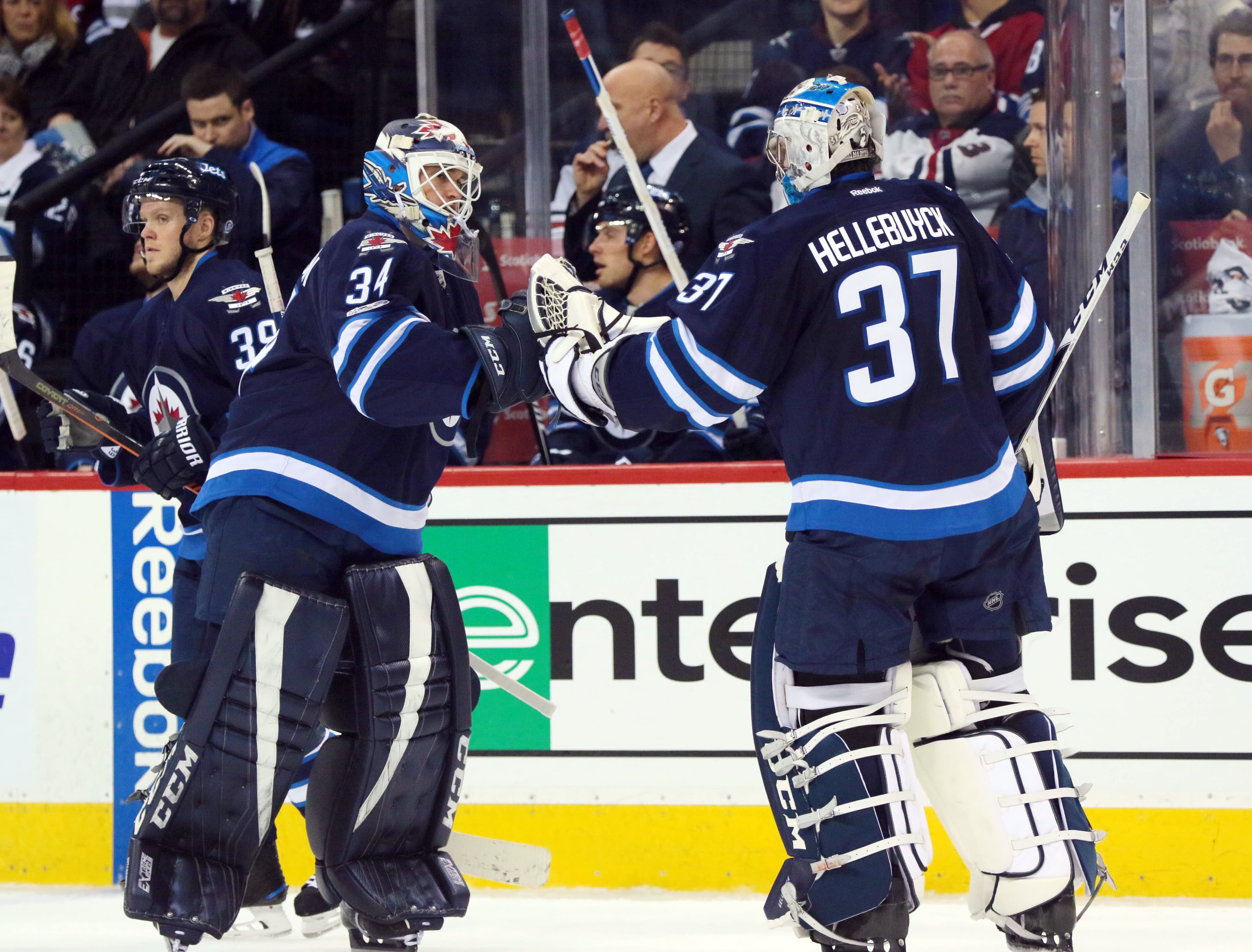Nation Sites
The Nation Network
JetsNation has no direct affiliation to the Winnipeg Jets, True North Sports & Entertainment, NHL, or NHLPA
Types Of Tending Tandems

Photo credit: © Bruce Fedyck-USA TODAY Sports
The importance of the goalie position has been magnified over the last number of years. When looking at the current state of the NHL, where scoring has been steadily declining, it becomes much more important to have a solid goaltender in the crease every game.
Every single NHL team is continually searching for that number one goalie. Some teams currently have that, such as the Rangers in Lundqvist, the Sharks in Jones, or the Capitals in Holtby. The teams that don’t have that calibre of talent are trying to find it, or at least trying to find a serviceable netminder for the time being. Unfortunately things do not always go according to plan, especially when dealing with the randomness of human beings and the difficulty of hockey. When things aren’t going well, it leads to the situation the Jets had last off-season. It was clear at the time that there was little trust in Hellebuyck being a true number one goalie in the 2017-2018 season.
That in itself is not a huge problem as many young goalies take some time before they reach their full potential. The real issue was the lack of backup plan (pun intended) because of the consistently terrible play of Michael Hutchinson last season. This issue needed to be addressed, and the most obvious way forward was to sign a goalie, not to be the clear cut number one, but to aid in mentoring Hellebuyck as a 1A, 1B tandem.
There seems to be three main situations when a team enters into a 1A, 1B scenario. The first category of 1A, 1B is when a team has no idea what goalie to start. This can be utter chaos. Usually this occurs when there are no prospects that are ready to make the NHL, combined with an inferior team beyond the crease. A good example of the ‘no idea’ situation is Calgary when they carried three goalies throughout the 2015-16 season. None of them really found any consistency and it’s obvious that none of them were a long term solution, considering none of them stayed with the team.
The second 1A, 1B tandem is the early retirement option. This occurs when there is an aging goalie that has been around a while, and is looking to reduce his workload as he nears the end of his career. This is starting to occur in Florida where Luongo is not seen as the clear number one goalie he used to be. Entering into a timeshare is a great way to still get the valuable experience from a veteran goalie like Luongo, while not having to give him all the starts. Giving him less starts as his career slowly regresses is a good way to phase out a former star goaltender that is beginning to age.
The third option is the one the Winnipeg Jets fall under. This category is called the mentorship program. It was clear that the Winnipeg Jets were on the verge of a having a starting caliber goaltender. Hellebuyck had emerged as the starter during the 2016-17 season but was prone to a few bumps and bruises along the way. When there is a young goalie that has potential, it becomes the perfect scenario for the mentorship program. Being a young goalie is not a bad thing in itself. The problem with young netminders is finding the consistency from week to week, month to month, that most quality NHL starters have.
Entering into a 1A, 1B situation relieves a lot of the pressure from a young goalie, while still developing and getting more starts than a typical backup. It’s the best of both worlds in having an opportunity to play, without the full weight of expectations solely on one player.
Bringing in a proven veteran specifically for Winnipeg was important for two reasons. If Hellebuyck were to play exceptional and get majority of the starts (like he currently is doing), a solid veteran would understand the nature of the position in regards to hot streaks and not harbor much resentment for the lack of playing time. A good veteran would also be ready when called upon regardless of how many games have passed since the last start. On the other hand, if Hellebuyck were to play poorly, a veteran could step in and provide the team with solid goaltending while Hellebuyck continues to figure out his game. It seems that no matter what happens during the season, the team is now covered with either Hellebuyck or Mason being able to take the reins and win some stretches of games.
The point of having a 1A, 1B tandem is not to solve any immediate issues and make a playoff run. Rarely do any of the consistent playoff teams have a situation where they don’t have confidence in their starting goalie or not know who the starter will be going forward. All good teams have a solid goaltender they can rely on. The entire idea of utilizing a 1A, 1B situation is to either phase out one goaltender as their career is slowing finishing or mentor a young goalie from within the system to take the helm. The Jets clearly chose the option of mentoring Hellebuyck by bringing in Mason this off-season, and so far the move has been brilliant.
Breaking News
- Just find a way to win: Washington Capitals vs. Winnipeg Jets game day
- Three Takeaways: Jets drop below .500 in 6-3 loss to Boston
- It’s getting ugly: Jets drop third straight game to Bruins
- Gustav Nyquist set to return to lineup against Boston
- Heritage jersey homestand continues: Boston Bruins vs. Winnipeg Jets game day
